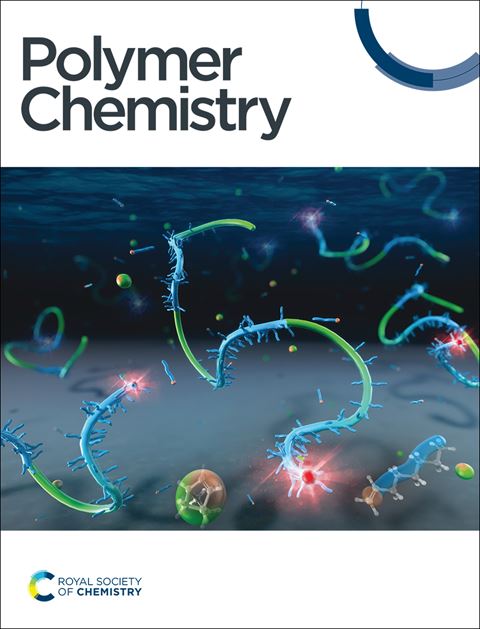尿素单体:半芳香族热塑性非异氰酸酯聚氨酯的合成与表征
IF 4.1
2区 化学
Q2 POLYMER SCIENCE
引用次数: 0
摘要
非异氰酸酯聚氨酯为传统聚氨酯提供了更安全的替代品,避免了异氰酸酯单体对健康和环境的危害。本文提出了一种无溶剂熔融缩聚方法,使用生物源尿素与脂肪族和芳香二胺的组合,绕过异氰酸酯前体。这种方法允许直接掺入亲核性较低的芳香二胺,以前在早期的非异氰酸酯路线中具有挑战性。调整芳香族二胺含量(5- 20wt .%),生成具有优异热稳定性的聚氨酯(Td,5% >;318°C)和广泛不同的机械性能。最值得注意的是,从软弹性体到高模量热塑性塑料,杨氏模量跨越了三个数量级(3mpa到1.1 GPa)。尽管原子力显微镜和x射线散射研究显示非晶形态没有明显的纳米级相分离,但由于尿素功能的存在,即结合双齿氢键作为物理交联,韧性薄膜表现出优异的机械性能。本报告展示了在具有可调性能的有机催化剂的存在下,使用更环保的合成方法合成高性能半芳香族聚氨酯而不牺牲材料性能的有效性。本文章由计算机程序翻译,如有差异,请以英文原文为准。
Urea as a Monomer: Synthesis and Characterization of Semi-Aromatic Thermoplastic Non-Isocyanate Polyureas
Non-isocyanate polyureas offer a safer alternative to traditional polyureas with the avoidance of health and environmental hazards of isocyanate monomers. This manuscript presents a solvent-free melt polycondensation method using bio-sourceable urea with a combination of aliphatic and aromatic diamines, which bypasses isocyanate precursors. This approach allows direct incorporation of less nucleophilic aromatic diamines, previously challenging in earlier non-isocyanate routes. Adjusting the aromatic diamine content (5-20 wt.%) created polyureas with excellent thermal stability (Td,5% > 318 °C) and widely varied mechanical properties. Most notably, Young's moduli spanned three orders-of-magnitude (3 MPa to 1.1 GPa), from soft elastomers to high modulus thermoplastics. Although atomic force microscopy and X-ray scattering studies revealed amorphous morphologies without distinct nanoscale phase separation, ductile films exhibited excellent mechanical performance due to the presence of the urea functionalities, i.e., associative bidentate hydrogen bonding serving as physical crosslinks. This report demonstrates the efficacy of synthesizing high-performance semi-aromatic polyureas in the presence of an organocatalyst with tunable properties using greener synthetic methods without sacrificing material performance.
求助全文
通过发布文献求助,成功后即可免费获取论文全文。
去求助
来源期刊

Polymer Chemistry
POLYMER SCIENCE-
CiteScore
8.60
自引率
8.70%
发文量
535
审稿时长
1.7 months
期刊介绍:
Polymer Chemistry welcomes submissions in all areas of polymer science that have a strong focus on macromolecular chemistry. Manuscripts may cover a broad range of fields, yet no direct application focus is required.
 求助内容:
求助内容: 应助结果提醒方式:
应助结果提醒方式:


